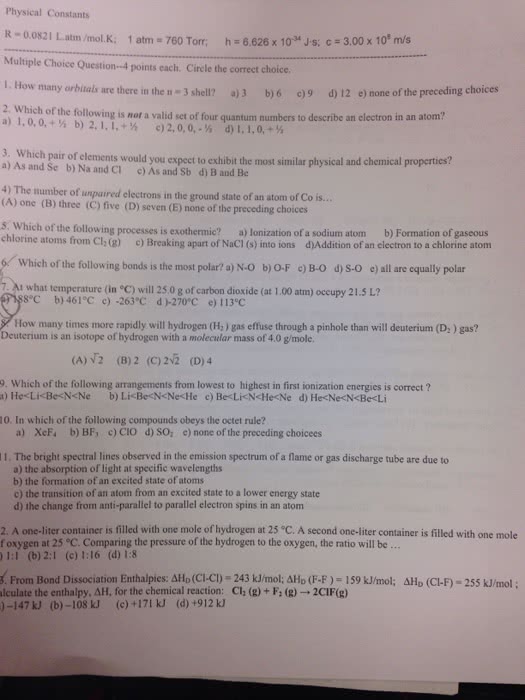The Born-Haber cycle is a series of steps that represent the formation of an ionic compound from a metal and a nonmetal. For example, the steps in a Born-Haber cycle for the formation of NaCl(s) consist of sublimation of the metal Na atom (ÎHsubl-Na) to form a gaseous Na atom, bond dissociation of the chlorine molecule (BECl2) to form a gaseous Cl atom, ionization energy of the sodium atom (IENa) to form a gaseous Na+ ion, electron affinity of the chlorine atom (EACl) to form a gaseous Cl- ion, and the lattice energy of NaCl (LENaCl) involving the coalescing of the gaseous Na+ and Cl- ions to form a solid NaCl formula unit.
With the above summary in mind, which particular steps of the Born-Haber cycle would be represented in the following reaction?
K(s) + ½F2(g) â K(g) + F(g)
ÎHsubl-K and EAF
ÎHsubl-K, ½BEF2, and EAF
ÎHsubl-K and ½BEF2
IEK and ½BEF2
The Born-Haber cycle is a series of steps that represent the formation of an ionic compound from a metal and a nonmetal. For example, the steps in a Born-Haber cycle for the formation of NaCl(s) consist of sublimation of the metal Na atom (ÎHsubl-Na) to form a gaseous Na atom, bond dissociation of the chlorine molecule (BECl2) to form a gaseous Cl atom, ionization energy of the sodium atom (IENa) to form a gaseous Na+ ion, electron affinity of the chlorine atom (EACl) to form a gaseous Cl- ion, and the lattice energy of NaCl (LENaCl) involving the coalescing of the gaseous Na+ and Cl- ions to form a solid NaCl formula unit.
With the above summary in mind, which particular steps of the Born-Haber cycle would be represented in the following reaction?
K(s) + ½F2(g) â K(g) + F(g)
| ÎHsubl-K and EAF |
| ÎHsubl-K, ½BEF2, and EAF |
| ÎHsubl-K and ½BEF2 |
| IEK and ½BEF2 |
For unlimited access to Homework Help, a Homework+ subscription is required.

